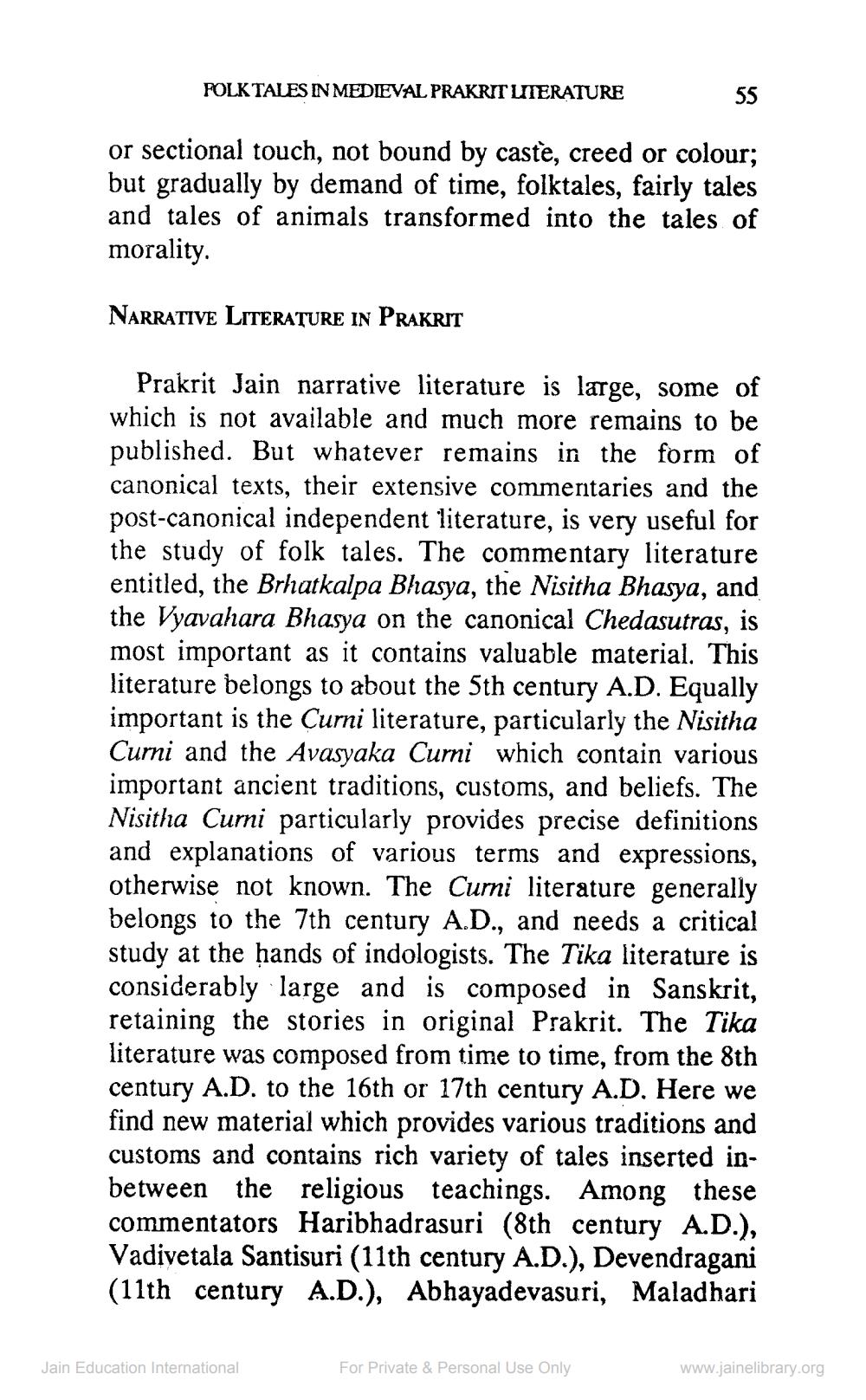________________
FOLK TALES IN MEDIEVAL PRAKRIT LITERATURE
55
or sectional touch, not bound by caste, creed or colour; but gradually by demand of time, folktales, fairly tales and tales of animals transformed into the tales of morality.
NARRATIVE LITERATURE IN PRAKRIT
Prakrit Jain narrative literature is large, some of which is not available and much more remains to be published. But whatever remains in the form of canonical texts, their extensive commentaries and the post-canonical independent literature, is very useful for the study of folk tales. The commentary literature entitled, the Brhatkalpa Bhasya, the Nisitha Bhasya, and the Vyavahara Bhasya on the canonical Chedasutras, is most important as it contains valuable material. This literature belongs to about the 5th century A.D. Equally important is the Curni literature, particularly the Nisitha Curni and the Avasyaka Cumi which contain various important ancient traditions, customs, and beliefs. The Nisitha Curni particularly provides precise definitions and explanations of various terms and expressions, otherwise not known. The Curni literature generally belongs to the 7th century A.D., and needs a critical study at the hands of indologists. The Tika literature is considerably large and is composed in Sanskrit, retaining the stories in original Prakrit. The Tika literature was composed from time to time, from the 8th century A.D. to the 16th or 17th century A.D. Here we find new material which provides various traditions and customs and contains rich variety of tales inserted inbetween the religious teachings. Among these commentators Haribhadrasuri (8th century A.D.), Vadivetala Santisuri (11th century A.D.), Devendragani (11th century A.D.), Abhayadevasuri, Maladhari
Jain Education International
For Private & Personal Use Only
www.jainelibrary.org




